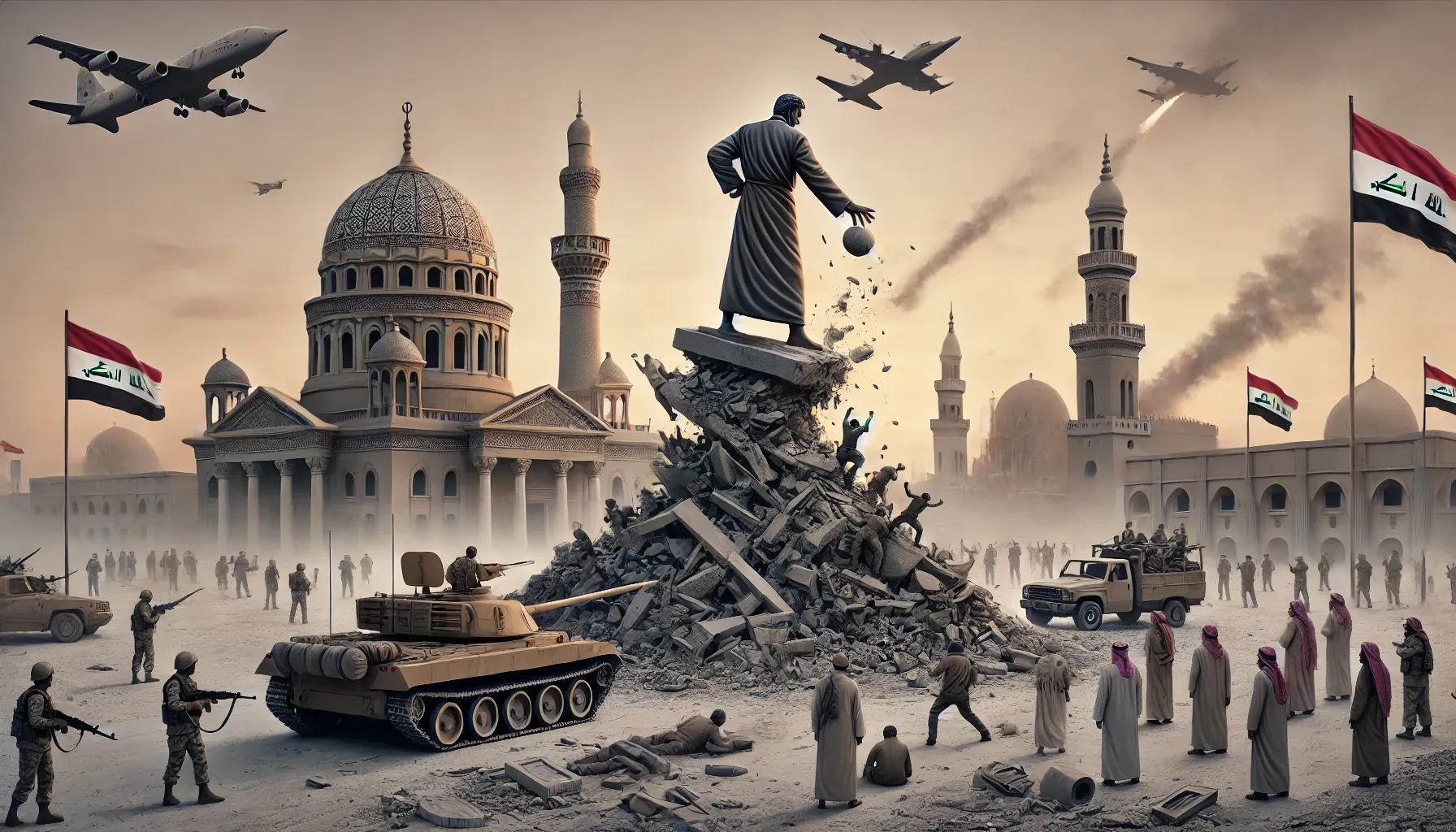On This Day Today
The Fall of Baghdad (2003): A Turning Point in Modern History
Last Updated
9th April, 2025
Date Published
8th April, 2025
Share This Post With Someone


- Date and Event: On April 9, 2003, Baghdad, the capital of Iraq, fell to US-led coalition forces, marking a significant moment in the Iraq War, which began on March 20, 2003.
- Objective of the War: The invasion aimed to dismantle Saddam Hussein’s regime, accused of possessing weapons of mass destruction (WMDs), though no such weapons were ultimately found.
- Symbolic Act: The toppling of Saddam Hussein’s bronze statue in Firdos Square by US forces and Iraqi locals symbolized the end of his 24-year dictatorial rule.
- Military Campaign: After three weeks of intense combat, the US Army’s 3rd Infantry Division captured Baghdad, facing resistance from the Iraqi Special Republican Guard.
- Immediate Aftermath: The fall led to widespread looting and a breakdown of civil order, creating a power vacuum that destabilized Iraq.
- Long-term Impact: The event triggered a prolonged insurgency, with groups like al-Qaeda and later ISIS emerging, complicating Iraq’s political and security landscape.
- Saddam’s Fate: Captured in December 2003, Saddam Hussein was executed in December 2006, but the war continued until the US withdrawal in December 2011.
- Casualties and Costs: The conflict resulted in over 4,700 US and allied troop deaths and more than 100,000 Iraqi civilian casualties, highlighting its human toll.
- Geopolitical Shift: The invasion altered Middle Eastern dynamics, weakening Iraq and increasing Iran’s regional influence.
- Lessons for Governance: The lack of post-war planning underscored the challenges of nation-building and the importance of stable governance structures.
Glossary
- Iraq War: A military conflict initiated by the US and allies in 2003 to remove Saddam Hussein from power.
- Saddam Hussein: Former President of Iraq (1979–2003), known for authoritarian rule and regional conflicts.
- Weapons of Mass Destruction (WMDs): Chemical, biological, or nuclear weapons; their alleged presence was a key justification for the invasion.
- Firdos Square: A public square in Baghdad where Saddam’s statue was toppled, symbolizing regime change.
- Insurgency: Armed rebellion against established authority, which surged in Iraq post-2003.
- Coalition Forces: A multinational military alliance, primarily led by the US and UK, involved in the invasion.
- Power Vacuum: A situation where no authority effectively governs, leading to chaos and instability.
- Al-Qaeda: A global terrorist network that gained a foothold in Iraq after the invasion.
- ISIS: Islamic State of Iraq and Syria, a militant group that emerged from the post-war instability.
- Nation-Building: The process of constructing or reconstructing a state’s institutions and governance after conflict.